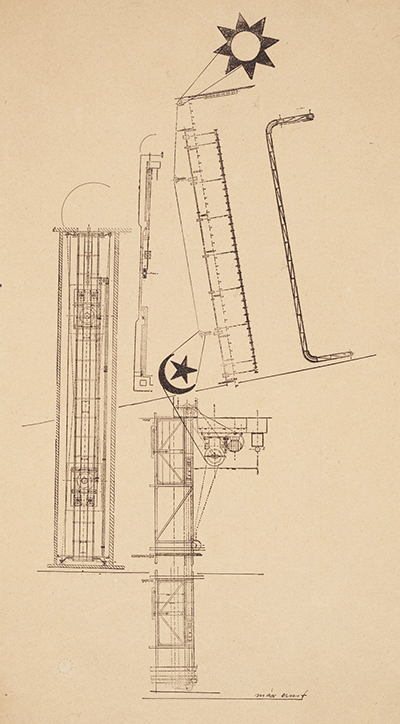Max Ernst may not have been as famous for his drawings as he was for his paintings, but items such as Trophy, Hypertrophied give us all an interesting insight into a different sphere of his work which still held a great significance within his overall oeuvre.
The artist used a technique called line-block printing in order to produce this particular piece. He would then draw over the top of the print afterwards in order to add additional detail. The finished artwork looks similar to an engineering design, or architectural plan, such is the precision of line. This was a time of experimentation and change within the art world, and pretty much anything went during the 20th century, particularly in the second half and so items like this would not shock us in quite the same way that they would have done in previous centuries. This drawing is actually dated at around 1919, making it one of the earliest items that we have uncovered from Max Ernst's career, giving it an extra importance as we attempt to learn more about his development as an artist.
The drawing measures 40cm by 28cm and is proudly owned by MoMA in the USA. The design is simple in that most of the artwork is blank, but the mechanical sections are highly detailed, with seemingly a series of pulleys and gears that one might find in an early Da Vinci invention. Ernst would continue to work in a similar way during this period, also gifting us Farewell My Beautiful Land of Mary Laurencen. Help! Help!, which itself beared clearly similarities with this piece. At this stage in his career there was very much an attitude of experimentation and he was not sure what his preference was yet, and that is what he was searching for. The artist would work in illustration for publications that offered a very different style of drawing later on, with some of the books actually being his own.
Those interested in this type of precise drawing as an artwork may be interested in Kandinsky drawings, with this artist coming from Moscow but building most of his career within Germany. He also became heavily involved in the theory around art and was just as forward-thinking as Max Ernst and also studied color combinations in extraordinary detail, which would later benefit his oil paintings enormously.
Trophy, Hypertrophied from 1919 can be found in the collection of the Museum of Modern Art in New York City, USA. They own a number of drawings from key 20th century artists, besides just Max Ernst. There are many from the career of Jackson Pollock, for example, as well as various screenprints, etchings and even watercolours. Some examples of these include Untitled (Sheet of Studies), Untitled (1938–41) and also Untitled (Animals and Figures). As you will notice, he did not name any of his drawings, with some being simple doodles and other being studies for later paintings that would be in a larger scale, essentially mural-like. All in all, MoMA is an excellent venue from which to learn more about 20th century art and most of the major names from Europe and the US can be found here somewhere within their impressive collection.




